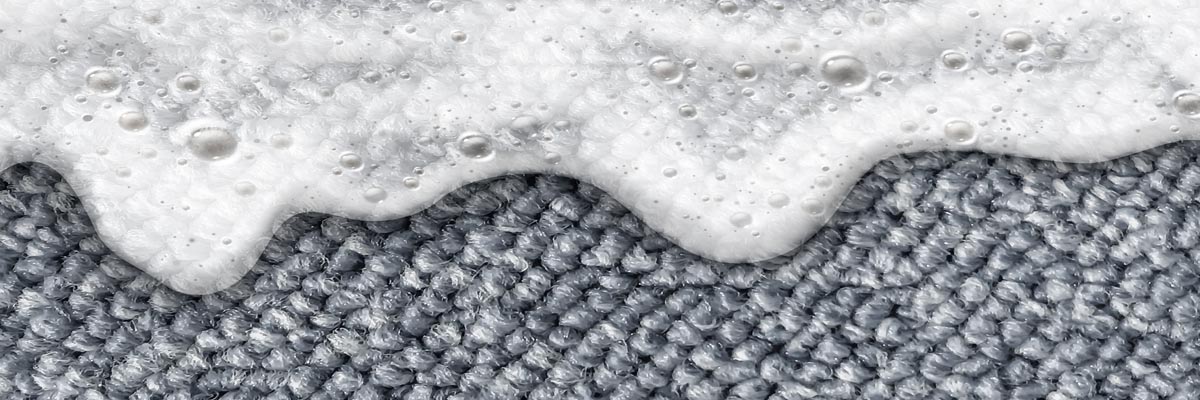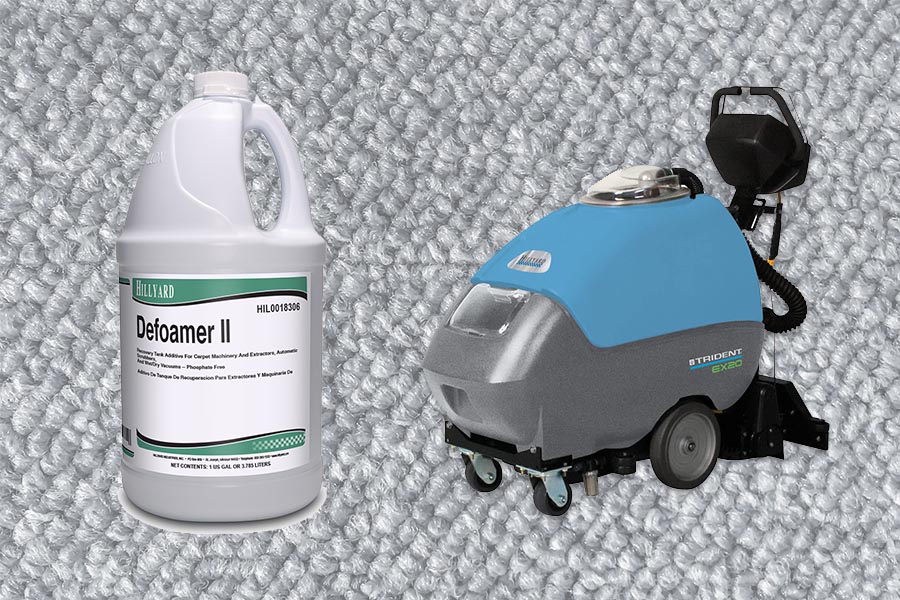How to Prevent Foaming During Carpet Extraction
Foam buildup in carpet extractor recovery tanks can be a common issue that commercial cleaners face. Various factors can cause foaming, and ignoring it can lead to more problems.

This article will discuss best practices for preventing foam in carpet extractor recovery tanks. By understanding the underlying causes and implementing appropriate preventive measures, commercial cleaners can ensure that their carpet cleaning equipment operates optimally and avoid costly repairs.
What problems does foam cause in a carpet extractor?
Foam in the carpet extractor poses several problems for commercial cleaners. First, it can cause the float in the recovery tank to close before the tank is full, reducing the capacity of the extractor by as much as 33%. This disrupts the cleaning process and reduces efficiency. Second, and more importantly, foam can cause the float mechanism to malfunction. If foam prevents the float from closing the vacuum system, the dirty recovered cleaning solution gets pulled into the vacuum motor. Over time, this moisture and dirt can cause corrosion and premature vacuum motor failure. In some extreme cases, the motor may short out entirely, incapacitating the machine.
Why does foaming occur during carpet extraction?
Foaming during carpet extraction can occur for various reasons, all of which are important for commercial cleaners to be aware of. One common cause of foaming is using the wrong chemicals for the application. For instance, using a carpet shampoo intended for a rotary carpet cleaning process can lead to excessive foaming during extraction.
Furthermore, residual chemicals left in the carpet from previous cleanings can also contribute to foaming. In addition to carpet cleaning solution, encapsulation cleaning chemicals left on the carpet fibers can also cause foam in the recovery tank.

How to use a defoamer in a carpet extractor
Carpet defoamer comes in two forms: a crystal, which is sprinkled on the carpet, and a liquid, which is used to treat the vacuum recovery system. Hillyard recommends Defoamer II, a liquid-type defoamer.
If your carpet extractor has never been treated with Defoamer II, mix six ounces of defoamer with one quart of water in a bucket. Next, disconnect the extractor's recovery hose from the shoe and suck up the diluted Defoamer II solution directly from the bucket. This will treat the entire vacuum system instead of just the recovery tank. Finally, connect the hose back on to the extractor.
Next, add 0.5 to 1.0 ounces of Defoamer II per gallon of recovery tank capacity to the recovery tank. If excessive foam develops during extraction, add more defoamer to control the suds. Do not exceed six ounces of defoamer per gallon of recovery tank capacity.
Repeat this process as needed to control foam while cleaning.
Best Practice Carpet Extraction Procedures
Hillyard recommends two different carpet extraction procedures: a one-step procedure and a two-step procedure. The one-step procedure is a lower labor-cost method, but it leaves behind more residual carpet-cleaning chemicals on the carpet fibers. Whenever possible, use the two-step method, which includes a more thorough rinsing process and will yield better results.
Printable versions of these procedures are available using these links:
One-Step Carpet Extraction Procedure
- Remove furniture and walk-off mats.
- Vacuum carpet thoroughly, preferably with an upright vacuum. Use the detail tool to vacuum all floor-to-wall junctions.
- Place wet floor signs at all carpet to hard floor junctions.
- Use the Hillyard Spotting kit and Spotting chart to address any obvious discolored stains in the carpet. Click here for our spot removal guide.
- Dilute HD Extraction Extraction Cleaner into the extractor solution tank at a rate of 2 oz. / gallon of water. Add one scoop of Hillyard Suprox Booster for each gallon of water in the solution tank for enhanced results.
- Dispense 4 – 6 oz. of Hillyard Defoamer II into the recovery tank.
- Run the extractor over the carpet, engaging the solution supply, brushes, and vacuum; use a 25 – 50% overlap with each pass of the extractor.
- Position carpet fan(s) to allow sufficient airflow to promote quick carpet drying.
- Empty the solution tank and recovery tanks, thoroughly rinse out recovery, also remove and rinse extractor spray nozzles.
- Once the carpet is dry, remove wet floor signs.
Two-Step Carpet Extraction Procedure
- Remove furniture and walk-off mats.
- Preferably with an upright vacuum, thoroughly vacuum the carpet, using the detail tool to vacuum all floor-to-wall junctions.
- Place wet floor signs at all carpet to hard floor junctions.
- Use the Hillyard Spotting kit and Spotting chart to address any obvious discolored stains in the carpet. Click here for our spot removal guide.
- Dilute Hillyard Extraction pH Rinse into the extractor solution tank at a rate of 2 oz. / gallon of water or dispense Hillyard Carpet pH Rinse from an Arsenal dispenser into the solution tank.
- Dispense 4 – 6 oz. of Hillyard Defoamer II into the recovery tank.
- Using a Hillyard Cleaning Companion (CC17 or C3XP), pre-spray the carpet with Hillyard Carpet Pre-Spray at a rate of 600 – 1000 sq. ft. per diluted gallon. Allow the cleaning solution to dwell for five minutes. For smaller areas, a pump-up sprayer may suffice.
- Run the extractor over the carpet, engaging the solution supply, brushes, and vacuum, using a 25 – 50% overlap with each pass of the extractor.
- Position carpet fan(s) to allow sufficient airflow to promote quick carpet drying.
- Empty the solution tank and recovery tanks, thoroughly rinse out the recovery tank, and remove and rinse extractor spray nozzles.
- Once the carpet is dry, remove wet floor signs.
Get Expert Advice From Hillyard
Experience the difference that Hillyard's expertise can make. Our knowledgeable sales representatives are ready to help you in navigating the challenges of carpet extraction. Don't let foam-related issues disrupt your operations or lead to costly repairs. Take the proactive step towards efficient and hassle-free carpet cleaning by contacting Hillyard today. Fill out the "I'm Interested" form below, and one of our representatives will contact you.